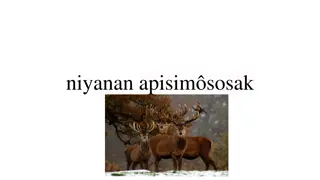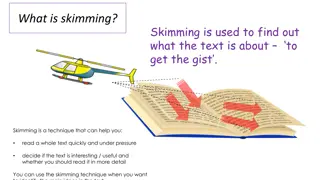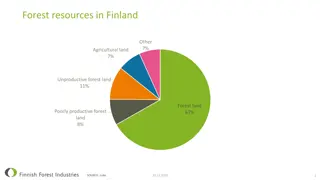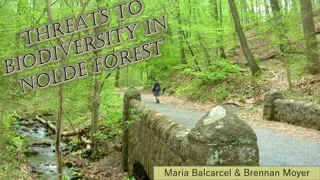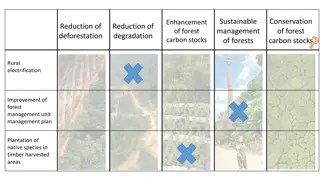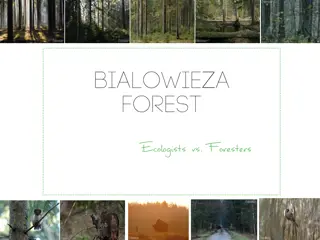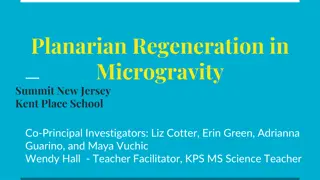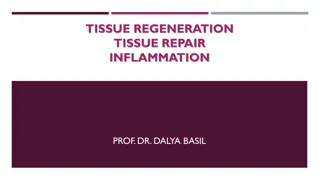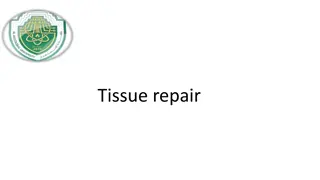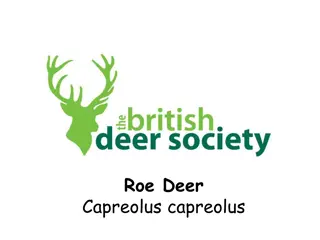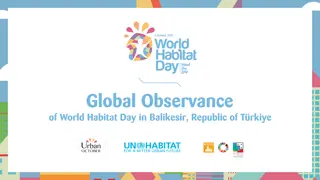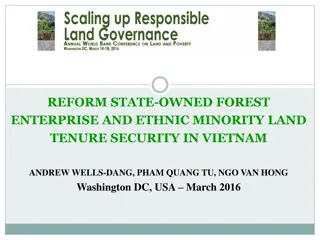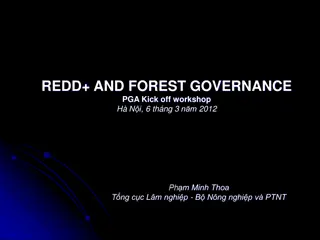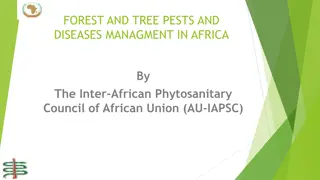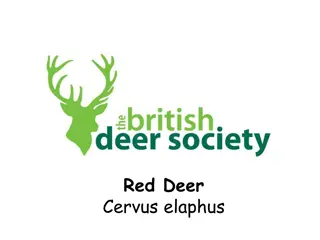Understanding Deer Impact on Forest Regeneration
Explore the collaborative deer management outreach initiative focused on maintaining healthy forests by addressing the impact of white-tailed deer on forest regeneration. Learn about the factors influencing forest health, predicted regeneration of tree species, and survey results on forest regeneration success. Discover how deer affect forest structure and the reasons behind marginal or failed forest regeneration. Gain insights into the role of deer in shaping habitat and the ecosystem dynamics.
Download Presentation

Please find below an Image/Link to download the presentation.
The content on the website is provided AS IS for your information and personal use only. It may not be sold, licensed, or shared on other websites without obtaining consent from the author. Download presentation by click this link. If you encounter any issues during the download, it is possible that the publisher has removed the file from their server.
E N D
Presentation Transcript
Healthy Forests, Healthy Deer Collaborative Deer Management Outreach Initiative
What makes a healthy forest? A variety of native plant and tree species Ability for a new forest to grow or regenerate in the case of disturbance (natural disturbance or timber harvest)
Predicted Regeneration of Native Tree Canopy Species in New York State 68% good very good ~1/3 poor-fair Source: Forest Regeneration in NYS, The Nature Conservancy, 2010
Predicted Regeneration of Desirable Timber Species in New York State 43% good very good >half poor-fair Source: Forest Regeneration in NYS, The Nature Conservancy, 2010
Forest Regeneration Success? Based on Cornell University 2009 Survey of Foresters (% of forest stands) Statewide Adirondacks Southern Highlands Other Regions Highly successful 13 12 16 8 Moderately successful 17 31 13 16 Marginally successful 45 50 47 38 Complete failure 25 7 24 38
Reasons for Marginal or Failed Forest Regeneration? Based on Cornell University 2009 Survey of Foresters (% of respondents) Statewide Adirondacks Southern Highlands Other Regions Deer browsing 72 38 76 81 Interfering vegetation 50 42 60 39 Landowner lack of interest or knowledge 27 9 23 40 Landowner did not invest adequate $$ 14 16 17 9 Soil or site limitation 14 14 11 19 Forest health 10 11 6 15
White-tailed Deer Ability to change their own habitat and the habitat of other species
How Do Deer Affect the Forest? Change the Forest Structure Missing layers of vegetation
How Do Deer Affect the Forest? Change the Forest Structure
How Do Deer Affect the Forest? Influence the kinds of plants growing in the forest High Preference Species Low Preference Species Red maple (Acer rubrum) Sugar maple (Acer saccharum) White ash (Fraxinus americana) Aspen (Populus spp.) Oak (Quercus spp.) Basswood (Tilia americana) Eastern hemlock (Tsuga canadensis) Birch (Betula spp.) Maple leaf viburnum (Viburnum acerifolium) American beech (Fagus grandifolia) Hop hornbeam (Ostraya virginiana) Striped maple (Acer pensylvanicum) White pine (Pinus strobus) Red pine (Pinus resinosa) Spruce (Picea spp.) American hornbeam (Carpinus carolinensis) Black cherry (Prunus serotina) Red elderberry (Sambucus racemosa) Blackberry and raspberry (Rubus spp.)
Economic Effect Species preferred by deer also tend to be the most economically valuable timber species (oak, maple, etc.)
Deer Density versus Wildflower Species Richness # Wildflower Species Deer Density #/Square Mile
How Do Deer Affect the Forest? Browsing native plants allows room for invasive plants to take over Degraded plant community, structure favorable for black-legged ticks
Browse tolerant native plants can also take over and may require purposeful management to restore even if deer populations are reduced
How Do Deer Affect other Wildlife? Change the Habitat Structure and Composition vs
Deer Density and Songbird Abundance # Songbirds Observed Deer Density #/Square Mile
Forest breeding bird species trends 1980- 2005 Canopy nesters or stable Mid-story, shrub, and ground nesters Photo credit: Bonnie Gruenberg Photo credit: Cheep shot Photo credit: Andy Reago & Chrissy McClarren Photo credit: Andy Reago & Chrissy McClarren
Deer Can Have a Long-lasting Effect on their OWN Habitat
What can you do? Deer Management Options Fencing Individual tree protection Increase harvest of female deer Encourage hunters on your land to shoot a doe before shooting a buck Obtain Deer Management Assistance Program (DMAP) permits for hunters to use on your land
What can you do? Step 1. Assess the situation a. Visual signs i. Are there wildflowers present? Do they flower? Is there a variety of seedlings present? Are any of them growing past the height that deer can reach? iii. Is there evidence of browsing (browse line, direct browse to seedlings, etc.) ii.
Step 1. Assess the situation (continued) b. Create your own exclosure c. Monitor your forest land
Step 2. Continue to monitor the situation a. Substantial impact = no? Continue to monitor the situation b. Substantial impact = yes? Potential solutions Manage reduce deer numbers; fence to exclude deer (even small exclosures beneficial); etc.
Step 3. Restore your woodland (overcome legacy effects) a. Remove competing vegetation (beech brush, ferns, invasive species) b. Fence after you remove or problem will return c. Planting may be necessary in severely degraded habitats with long history of deer impacts (no remaining seed source)






